Amanda Roberts's Blog
August 7, 2025
From Fines to Pennies: Why China’s Childcare Subsidy Won’t Fix a Generation’s Broken Trust
In a bitter twist of history, China—once infamous for punishing families who had more than one child—is now offering the equivalent of $500 a year to coax young adults into having babies. It’s a staggering policy reversal, but one that’s too little, too late for many of the very people the government is now trying to court.
As CNN reports, this new childcare subsidy is part of China’s desperate scramble to reverse its declining birth rate, with 90 billion yuan ($12.5 billion) allocated to support families with children under three.¹⁷ In theory, it sounds promising. In practice, it’s a hollow gesture that fails to address the root of the problem: an entire generation that no longer believes in the promise of upward mobility, family stability, or state protection.
Take Zane Li, whose family was fined nearly three times their annual income for having a second child during the one-child policy era. That trauma—shared by millions—can’t be erased with a few hundred yuan. For many young Chinese adults, this isn’t just about money. It’s about mistrust, exhaustion, and a grim understanding that the future looks bleaker than the past.
A Symbolic Sum in a Sea of CostsLet’s be clear: 3,600 yuan ($500) a year per child is not enough to move the needle. According to the YuWa Population Research Institute, raising a child to age 18 costs over 538,000 yuan ($75,000)—and in major cities like Beijing and Shanghai, it easily surpasses 1 million yuan.¹⁶ The subsidy covers less than 1% of that burden.
If this were merely an economic issue, the math would speak for itself. But what China faces now is a deeper crisis of confidence—particularly among women.
The Gendered Trap of Parenting One of the most damning revelations in the article comes from young women like June Zhao and Gao, who watched their mothers juggle full-time jobs and the demands of hyper-competitive childrearing. They’ve inherited not just the pressure, but the disillusionment. And they’re not fooled by nationalist rhetoric that exhorts them to become “virtuous wives and good mothers.”
One of the most damning revelations in the article comes from young women like June Zhao and Gao, who watched their mothers juggle full-time jobs and the demands of hyper-competitive childrearing. They’ve inherited not just the pressure, but the disillusionment. And they’re not fooled by nationalist rhetoric that exhorts them to become “virtuous wives and good mothers.”
As sociologist Emma Zang notes, unless China tackles gender inequality, workplace protections, and paternity leave, fertility rates won’t bounce back. Instead, parenting looks like a trap—a high-stakes gamble that costs women more than they can afford physically, emotionally, and professionally.
“Lie Flat” and Step BackThe government’s messaging—have more babies for the good of the nation—rings hollow when it comes up against the lived realities of youth unemployment, unaffordable housing, and the soul-crushing “996” work culture (9 a.m. to 9 p.m., six days a week).
No wonder young people are choosing to “lie flat,” a popular buzzword that captures their quiet rebellion: opting out of marriage, parenthood, and the rat race altogether. Why build a future when all signs point toward burnout and disappointment?
From Coercion to Coaxing—But Trust Is Broken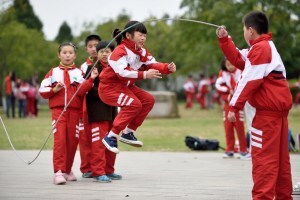 The irony cuts deeper than policy reversal—it’s written in blood and trauma that spans decades. The same state that once enforced what can only be described as systematic brutality is now pleading for fertility with cash incentives.
The irony cuts deeper than policy reversal—it’s written in blood and trauma that spans decades. The same state that once enforced what can only be described as systematic brutality is now pleading for fertility with cash incentives.
Between 1979 and 2015, Chinese authorities claim that 400 million births were “averted” by the one-child policy—a staggering euphemism for what often constituted violence against women and families. Blind lawyer Chen Guangcheng documented 130,000 forced abortions and sterilizations in just one county—Linyi—alone.¹ The scale transforms individual tragedy into systematic terror.
A single midwife in rural Jiangxi province told documentary filmmaker Nanfu Wang that she had performed “50,000 to 60,000 abortions” over 25 years, keeping count because she “felt guilty.” She revealed how “sometimes a late-term baby would be born alive, and she would have to kill the baby after delivering it,” describing how “her hands would tremble when she did that.”²
The Machinery of EnforcementThe brutality wasn’t sporadic—it was institutional. Provincial slogans revealed the systematic nature: “Anyone avoiding sterilization must be punished by bulldozing their house” (Sichuan) and “All villagers will be sterilized once a single villager violates the birth quota” (Yunnan).³
Family planning officials operated with impunity. As Chen Guangcheng testified, authorities would “lock you up in the family planning department and beat you everyday,” using cover stories of “education” and forcing victims to pay “tuition” for their detention.⁴ When women tried to hide pregnancies, “pig basket vans” became a chilling symbol—vehicles used to round up families and transport them for forced procedures.⁵
Individual Stories of Terror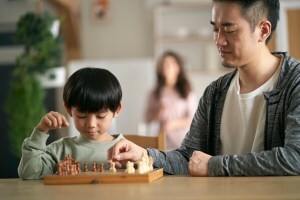 The personal accounts expose the human cost. Liu Ping’s testimony to Congress detailed being dragged from her home by six agents, held down on an operating table, and forcibly aborted while unconscious. She described pleading with authorities: “We only wanted another baby. I never wanted to do anything evil.”⁶
The personal accounts expose the human cost. Liu Ping’s testimony to Congress detailed being dragged from her home by six agents, held down on an operating table, and forcibly aborted while unconscious. She described pleading with authorities: “We only wanted another baby. I never wanted to do anything evil.”⁶
The 2012 case of Feng Jianmei became internationally notorious when photos showed her lying next to the corpse of her 7-month-old daughter, who had been killed by forced abortion because the family couldn’t afford the $6,300 fine.⁷ Chen Guangcheng documented how “doctors would inject poison directly into the baby’s skull to kill it” and “strangled or drowned” babies who were “born alive and began crying.”⁸
The policy’s enforcement extended beyond the pregnant woman: families reported that “aunts, uncles, cousins, pregnant younger sisters, in-laws” were detained, “didn’t get food or water, and all of them were severely beaten” until compliance was achieved.⁹
The Price of Speaking TruthThose who dared document these abuses faced severe punishment. Chen Guangcheng, after filing a class-action lawsuit on behalf of victims in 2005, was imprisoned for over four years, then kept under house arrest with 66 guards rotating around his home daily. His six-year-old daughter was denied education, and activists who tried to visit him were “beaten and detained”.¹⁰
No Reckoning, No Redemption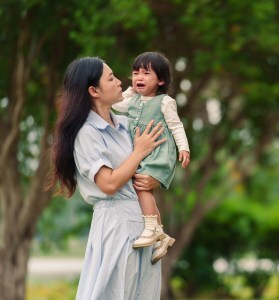 This pivot from coercion to coaxing comes without acknowledgment, apology, or reparations. Chen Guangcheng estimates that “360 to 400 million young lives” were killed over 35 years—yet the government that perpetrated this violence now expects gratitude for $500 annual subsidies.¹¹
This pivot from coercion to coaxing comes without acknowledgment, apology, or reparations. Chen Guangcheng estimates that “360 to 400 million young lives” were killed over 35 years—yet the government that perpetrated this violence now expects gratitude for $500 annual subsidies.¹¹
The same officials who once measured success by abortion quotas now distribute propaganda about the “virtue and duty” of having children. But you cannot simply rebrand state terror as family support and expect trust to magically return.
The Demographic Time BombChina faces not just declining births but a rapidly aging population with insufficient young workers to support them. Right now China has a dependency ratio of about five working adults to support one retiree. That’s pretty good, that’s a very healthy ratio. In about 20 years that’s going to jump to about 1.6 working adults to support one retiree, creating an economic crisis of unprecedented proportions.¹²
This demographic collapse also carries a gendered dimension. China now has “30 million more men than women, 30 million bachelors who cannot find brides… They call them guang guan, ‘broken branches’… They are the biological dead ends of their family.”¹³ This gender imbalance, driven by decades of sex-selective abortions under the one-child policy, has created what experts describe as “a powerful, driving force behind trafficking in women and sexual slavery from nations surrounding China.”¹⁴
The Workplace Reality for WomenEven if young women wanted children, China’s economic structure punishes motherhood. A 2020 study reported that 45 percent of respondents said their employment was negatively affected by pregnancy or childrearing. Over one-third reported income loss, and more than 20 percent described losing opportunities for training or promotions. Another 13 percent said they were fired or forced to resign.¹⁵
The government’s messaging—have more babies for the good of the nation—rings hollow when companies systematically discriminate against mothers and the state provides inadequate support for working families.
A Crisis of LegitimacyChina’s fertility crisis isn’t a policy problem—it’s a crisis of legitimacy. A government that spent decades proving it could control life and death now discovers it cannot command love, hope, or trust. The subsidy isn’t about supporting families; it’s about propping up a system that has already failed them.
Until China fundamentally restructures its society to support families—by protecting working mothers, guaranteeing childcare, reducing education costs, and ensuring job security—its fertility crisis will only deepen. More fundamentally, until it acknowledges the systematic violence it inflicted on families for decades and makes genuine amends, no amount of cash can restore what was broken.
Because you can’t bribe hope. And you can’t subsidize away despair.
The post From Fines to Pennies: Why China’s Childcare Subsidy Won’t Fix a Generation’s Broken Trust first appeared on Amanda Roberts Writes.
August 5, 2025
Revisiting The X-Files: “Hell Money” and the Haunted Histories of Chinatown
Like many nerdy couples of a certain age, my husband and I recently decided to rewatch The X-Files—a series I hadn’t seen since I was a kid. I remembered the aliens and conspiracies, the monsters and the moody lighting. But I didn’t remember this episode.
Season 3, Episode 19 — “Hell Money” — took me by surprise.
Set in San Francisco’s Chinatown, this episode follows Mulder and Scully as they investigate a string of gruesome deaths: victims burned alive in crematory ovens, their organs missing, Chinese hell money scattered near the scene. It’s a classic X-Files premise twisted with supernatural implications, but what stood out most wasn’t the plot — it was the cast. I gasped when a young BD Wong appeared on screen. Moments later, Lucy Liu, barely in her twenties, appeared as well.
Seeing these now-iconic actors in early roles was thrilling. BD Wong brings a quiet intensity to Detective Chao, while Lucy Liu appears in one of her very first screen roles as Kim Hsin. And then there’s James Hong—a legendary character actor whose face you’ve seen in everything from Big Trouble in Little China to Seinfeld and voice you’ve heard in everything from Mulan to Kung Fu Panda—delivering a chilling performance as the mysterious “Hard-Faced Man.” It’s a powerhouse trio of Asian-American talent that feels especially significant looking back nearly three decades later.
What the Episode Gets Right
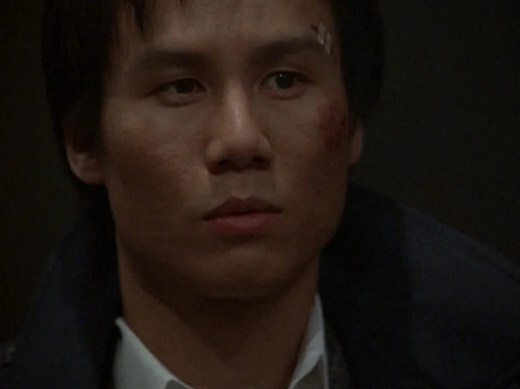
At its heart, “Hell Money” is about sacrifice, fear, and silence. The emotional core of the episode—the story of a father risking his life to afford leukemia treatment for his daughter—is genuinely affecting. Michael Yama delivers a tender, understated performance as Mr. Hsin, a man drawn in
to an underground lottery where the losers pay in organs, not cash.
Visually, the episode is rich and atmospheric. Director Tucker Gates and cinematographer John Bartley bathe Chinatown in deep shadows, green neon, and curling incense smoke. The masked men, the ceremonial bowls, and the ominous jade tiles create a moody, claustrophobic sense of danger that’s unique even within the surreal world of The X-Files.
And there are moments of startling resonance, like when Detective Chao (played with quiet depth by BD Wong) explains how he’s never fully accepted by either side of his identity:
“You might see the face of a Chinese man here but let me tell you something—they don’t see the same face. They see the face of a cop… American-born Chinese, ABC. To them, I’m just as white as you are.”
That moment, for me, was one of the most honest things The X-Files ever said about race and belonging.
Where It Misses the MarkDespite its ambitions, “Hell Money” falls into some familiar traps.
The episode’s use of Chinese traditions—burning hell money for the dead, the Hungry Ghost Festival, and ancestral offerings—is largely surface-level. These practices become exotic backdrops for organ-harvesting horror, rather than meaningful cultural context. The supernatural elements are teased but never fully explored, which leaves the ritualistic framing feeling hollow.
 Language is another significant issue. The production faced considerable challenges with authenticity that highlight the episode’s cultural limitations. According to the X-Files Wiki, “during postproduction, the lines of dialogue spoken by both the Japanese actor Michael Yama, who played Hsin, and Lucy Alexis Liu, who portrayed Hsin’s daughter and spoke Chinese with a Mandarin accent, were re-recorded, with assistance from a vocal coach, after it was realized that the two performers were meant to be speaking in a Cantonese dialect.”¹ Wikipedia confirms that “after filming wrapped up, actors Michael Yama and Lucy Liu were asked to re-record their dialogue, this time affecting Cantonese dialects,” with these rerecorded lines then dubbed over the original footage.²
Language is another significant issue. The production faced considerable challenges with authenticity that highlight the episode’s cultural limitations. According to the X-Files Wiki, “during postproduction, the lines of dialogue spoken by both the Japanese actor Michael Yama, who played Hsin, and Lucy Alexis Liu, who portrayed Hsin’s daughter and spoke Chinese with a Mandarin accent, were re-recorded, with assistance from a vocal coach, after it was realized that the two performers were meant to be speaking in a Cantonese dialect.”¹ Wikipedia confirms that “after filming wrapped up, actors Michael Yama and Lucy Liu were asked to re-record their dialogue, this time affecting Cantonese dialects,” with these rerecorded lines then dubbed over the original footage.²
Even with these post-production efforts, native Cantonese speakers found the dialogue unconvincing. One Chinese viewer noted in an IMDb review: “I found all those Chinese ppl spoke rather slow, seems Cantonese is a foreign language to them…I am not sure if this’s the real case for immigrants.”³ The same reviewer pointed out a significant error where “the gangster called Lucy’s Liu’s father’s name wrong! His surname written on the plate for ‘lucky draw’ was ‘Suen’, but the gangster called him ‘Sum’, this was a HUGE mistake!! The two names in Chinese is very different!”³ Another viewer suspected that “some of the Chinese character were played by japoneses or korean actors, because the accent sounded really off to me.”³
Most glaring, however, is the way the Chinese characters function in the narrative. While the cast includes an unusual number of Asian actors for 1996, many of their characters remain underdeveloped or stereotypical. Mr. Hsin is a noble victim. The “Hard-Faced Man” is a shadowy villain. And even Detective Chao—arguably the most complex character—ultimately dies, burned in the same ritualistic fire he tried to stop.
For an episode ostensibly centered on a Chinese-American community, Mulder and Scully are mostly bystanders. This could have been a strength—a rare moment when white protagonists step aside—but the writing doesn’t commit. Instead, the agents drift along the plot without meaningful insight or emotional engagement.
A Moment in TV HistoryDespite its flaws, “Hell Money” stands as a significant moment in Asian-American television history.
 In 1996, it was extraordinarily rare to see this many Chinese or Chinese-American actors in a single primetime episode. The casting was particularly notable given the career trajectories of its stars. BD Wong had already achieved critical acclaim, having won the Tony Award for his performance as Song Liling in M. Butterfly in 1988. As his Wikipedia entry notes, Wong is “the only actor in Broadway history to receive the Tony Award, Drama Desk Award, Outer Critics Circle Award, Clarence Derwent Award, and Theatre World Award for the same role.”⁴ By 1996, he had already appeared in major films including Father of the Bride (1991) and Jurassic Park (1993).⁴
In 1996, it was extraordinarily rare to see this many Chinese or Chinese-American actors in a single primetime episode. The casting was particularly notable given the career trajectories of its stars. BD Wong had already achieved critical acclaim, having won the Tony Award for his performance as Song Liling in M. Butterfly in 1988. As his Wikipedia entry notes, Wong is “the only actor in Broadway history to receive the Tony Award, Drama Desk Award, Outer Critics Circle Award, Clarence Derwent Award, and Theatre World Award for the same role.”⁴ By 1996, he had already appeared in major films including Father of the Bride (1991) and Jurassic Park (1993).⁴
Lucy Liu’s appearance in “Hell Money” came at a pivotal moment in her career. According to her Biography.com profile, “her earliest acting job found Liu in a small role in the teen drama Beverly Hills, 90210 during the 1991-1992 season,” followed by appearances “on popular television shows such as Coach, The X-Files and ER.”⁵ The Maya and Miguel Wiki confirms that Liu “was cast in both Hercules: The Legendary Journeys in ‘The March to Freedom’ and The X-Files in ‘Hell Money'” before landing “her first role in the main cast of a television series, that of Amy Li in Pearl alongside Rhea Perlman and Malcolm McDowell” in 1996.⁶ Just two years later, she would break through with her role as Ling Woo on Ally McBeal—”a character [that] was later created specifically for her” after she originally auditioned for a different part.⁶
And then there’s James Hong, whose presence lends the episode genuine gravitas. By 1996, Hong was already a Hollywood legend. According to Britannica, Hong “is one of the most prolific character actors in Hollywood history,” with a career spanning “seven decades” and appearances “in more than 600 films and TV shows.”⁷ Born in 1929, Hong had co-founded East West Players, “the first Asian American theatre organization,” to increase representation in the industry.⁸ He had already delivered iconic performances as Lo Pan in Big Trouble in Little China (1986) and Hannibal Chew in Blade Runner (1982).⁸ As a 2018 Deadline profile noted, Hong has “around 500 credits (not counting voiceovers)” and “has, through impossible odds, racked up the most credits of any actor — living or dead — on film, TV and stage.”⁹
This episode gave these actors a platform in an era when Asian representation on television was minimal. It also attempted—however clumsily—to center the immigrant experience and the liminal space inhabited by those born between cultures.
Critical Reception and Cultural ImpactThe episode’s reception was notably mixed, reflecting both its ambitions and limitations. According to Wikipedia, “Hell Money” “earned a Nielsen household rating of 9.9, being watched by 14.86 million people in its initial broadcast” and “received mostly mixed to positive reviews from television critics.”² Entertainment Weekly awarded it an A−, calling it “gorgeously shot” and citing the “lush, smoky gaming sequences” in particular.² Television Without Pity later “ranked ‘Hell Money’ the eleventh most nightmare-inducing episode of the show.”²
However, critical assessments revealed the episode’s cultural complexities. Robert Shearman, in his book Wanting to Believe: A Critical Guide to The X-Files, Millennium & The Lone Gunmen, rated it four stars out of five and called it a “hard episode to love [but] sincere and purposeful.” He praised how presenting the story from the Chinese immigrants’ perspective made “Mulder and Scully seem clumsy and arrogant. And by implication, the audience are made to feel just as arrogant.”²
Other reviews were more critical. John Keegan from Critical Myth gave it only 5/10, noting that the episode “attempted to make a mundane murder case interesting by forcing the agents to interact with an ‘alien’ culture.”²
Contemporary viewers particularly noted the production’s linguistic shortcomings. One IMDb reviewer described the dialogue as “daringly, although brokenly, presented in Cantonese,” acknowledging that while this “was a far more courageous move in 1996” than it would be today, the execution remained flawed.¹⁰
How It Holds Up TodayWatching “Hell Money” in 2025 is complicated. It’s eerie, emotional, and visually arresting. But it also feels dated in its cultural framing, particularly in a media landscape that increasingly values authenticity and depth over exoticism.
The episode’s premise—writer Jeffrey Vlaming’s combination of creator Chris Carter’s “pyramid scheme for body parts” concept with ideas about “a lottery in a small town” and “a corporate entity controlling the poor in Chinatown”—remains compelling.² But its execution reveals the limitations of 1990s television’s approach to cultural representation.
Still, it remains a fascinating artifact. It reminds us how far we’ve come—and how far we still have to go. The episode’s attempt to present much of its dialogue in Cantonese (albeit imperfectly) was genuinely courageous for network television in 1996, predating shows like Lost that would make multilingual storytelling more commonplace.
Would I recommend it? Yes—but with caveats. It’s worth watching for the performances alone, and for what it reveals about how 1990s television portrayed non-white communities. But it’s also a lesson in the importance of authentic representation: the difference between engaging with a culture and appropriating its surface elements for dramatic effect.
Final ThoughtsThe X-Files was never perfect, but it often aimed high. “Hell Money” reached for cultural insight and emotional weight, even if it stumbled. And rewatching it today—with older eyes and more context—offers an opportunity not just for nostalgia, but for reflection.
And let’s be honest: seeing Lucy Liu and BD Wong share a screen before either became a household name, alongside the incomparable James Hong in one of his hundreds of memorable roles? That’s a nerdy thrill I’ll always keep in my back pocket to share at dinner parties.
SourcesX-Files Wiki. “Hell Money.” https://x-files.fandom.com/wiki/Hell_Money“Hell Money.” Wikipedia. https://en.wikipedia.org/wiki/Hell_MoneyIMDb user reviews for “Hell Money” (1996). https://www.imdb.com/title/tt0751133/reviews/“BD Wong.” Wikipedia. https://en.wikipedia.org/wiki/BD_Wong“Lucy Liu: Biography, Actor, Emmy Nominee.” Biography.com. https://www.biography.com/actors/lucy-liu“Lucy Liu.” Maya and Miguel Wiki. https://mayaandmiguel.fandom.com/wiki/Lucy_Liu“James Hong.” Britannica. https://www.britannica.com/biography/James-Hong“James Hong.” Wikipedia. https://en.wikipedia.org/wiki/James_Hong“James Hong, 89 Year-Old Chinese American Actor: ‘Never Thought It Would Take This Long.'” Deadline, August 21, 2018.IMDb user review for “Hell Money” (1996). https://www.imdb.com/title/tt0751133/The post Revisiting The X-Files: “Hell Money” and the Haunted Histories of Chinatown first appeared on Amanda Roberts Writes.
July 14, 2025
What China’s Declining Birth Rate Means for the Future of Families
In the last few months, headlines have been quietly warning us: China’s birth rate is in freefall. For the second year in a row, the population has shrunk. And while policy changes have encouraged families to have more children, many are not responding. As someone who lived in China for over a decade—and as an adoptive parent who watched the system from both inside and out—I find these numbers deeply personal. They aren’t just statistics. They are people.
A Nation in Demographic Crisis The latest data confirms what demographers have been warning about for years: China’s demographic crisis is accelerating. In 2024, China recorded its third consecutive year of population decline, with 9.54 million babies born compared to 10.93 million deaths, leaving the country with a population of 1.4083 billion—down 1.39 million from the previous year (South China Morning Post).
The latest data confirms what demographers have been warning about for years: China’s demographic crisis is accelerating. In 2024, China recorded its third consecutive year of population decline, with 9.54 million babies born compared to 10.93 million deaths, leaving the country with a population of 1.4083 billion—down 1.39 million from the previous year (South China Morning Post).
This represents a fertility rate of just 1.01 births per woman in 2024, compared to 2.51 in 1990—far below the replacement level of 2.1 needed for population stability (Think Global Health). To put this in perspective, China’s fertility rate now approaches those of Singapore (0.95), Taiwan (0.86), South Korea (0.73), and Hong Kong (0.73)—some of the lowest in the world (Bank of Finland Institute).
The projections are sobering. UN researchers forecast China’s population could fall to 639 million by 2100, while researchers from Victoria University and Shanghai Academy of Social Sciences project it could drop to approximately 525 million by 2100 at current rates (Demographics of China – Wikipedia). Current forecasts suggest China’s population will shrink by over 100 million people by 2050 (ChinaPower Project).
In response, the government has tried a number of incentives: ending the one-child policy, encouraging three-child families, and offering housing subsidies and parental leave benefits. More recently, China has mandated that hospitals provide epidural anesthesia during childbirth and expanded IVF coverage to 27 provinces (Think Global Health). But as many analysts have noted, the core issue is not policy—it’s pressure. Parenting in modern China has become prohibitively expensive, especially in urban areas, where the cost of education, housing, and healthcare makes larger families feel impossible.
Watching the Shift from Within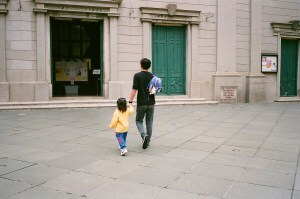 When we first moved to China, the one-child policy was still technically in place. We met countless families who had either navigated exceptions or quietly accepted the policy’s limitations. Over the years, we watched as the two-child policy was introduced in 2016, followed by the three-child policy in 2021.
When we first moved to China, the one-child policy was still technically in place. We met countless families who had either navigated exceptions or quietly accepted the policy’s limitations. Over the years, we watched as the two-child policy was introduced in 2016, followed by the three-child policy in 2021.
But policies don’t erase decades of social conditioning. Most of our friends and neighbors still planned their lives around having one child—or none at all. The fear of not being able to provide the “best” for their children often outweighed the desire to grow their families. International experience suggests that comprehensive policies—like those implemented in France and Denmark, including high subsidies, universal childcare, and flexible work arrangements—tend to be more effective than China’s current piecemeal approach (Newsweek).
The End of International AdoptionOur family’s own adoption journey has been deeply intertwined with China’s population story. We began the process to adopt our second child from China in 2019. We were just months away from completing that adoption when the pandemic halted international travel and adoption. Then, on August 28, 2024, China officially ended its international adoption program (NPR).
This decision affected hundreds of families worldwide who had pending applications, some of whom had been matched with children for years and were just steps away from finalizing adoptions (NPR). The program, which began in 1992, had facilitated over 160,000 Chinese children being adopted internationally, with about half going to the United States (Holt International).
After five years of waiting, hoping, and watching a child grow up in photos, the door was quietly closed.
While I’m not ready to share the full story, I can say this: the grief is real. It’s a loss that goes beyond paperwork or plans. It’s the loss of a future we had imagined—one deeply connected to China, and to a child we will likely never meet.
What Does the Future Hold?The economic implications of China’s demographic shift are staggering. China’s working-age population has been shrinking since 2012, and aging will reduce China’s per capita GDP growth by 10 percent over the coming decade—significantly harder than the 6 percent impact expected in the United States (Council on Foreign Relations).
The dependency ratio—the number of retirees supported by working-age adults—was 21.8 percent in 2022, meaning roughly five workers support one retiree. This percentage is expected to rise dramatically as the population ages (PBS News). In response, China began raising retirement ages in 2025 for the first time in decades, with men’s retirement age rising to 63 and women’s to 55-58, depending on their jobs, implemented gradually over 15 years.
Demographic experts warn that fewer young workers will be available to support an aging population. The pressure on children to care for parents and grandparents alone will increase. And countries that once relied on adoption to help vulnerable children may now see those children grow up in institutional care without international options.
But beneath all of that are real families trying to navigate an impossible equation. The conversation about declining birth rates isn’t just about China—it’s about how all of us think about family, support, care, and the future.
Looking AheadWe don’t know where our next adoption journey will lead, but it will not take us back to China. And yet, our hearts are still tied there—to the country, to the culture, to the stories we lived and the ones we hoped to live.
This moment in history—China’s “life after the one-child policy”—is complex and heartbreaking. The end of international adoption marks not just a policy shift, but the closing of a 32-year chapter that connected tens of thousands of children with families worldwide. And while I don’t have answers, I do believe in continuing to bear witness. To honor the children, the families, and the futures caught in this quiet crisis.
The post What China’s Declining Birth Rate Means for the Future of Families first appeared on Amanda Roberts Writes.
June 17, 2025
Coming Home: Life After China, One Step at a Time
It’s been a while since I last posted here. The last time I blogged, we were still living in China—navigating COVID restrictions, using Meituan and Didi like locals, and living a life that, for over a decade, felt like home.
 #FloridaMan #FloridaWoman #FloridaChild
#FloridaMan #FloridaWoman #FloridaChildSince then, everything has changed.
In 2022, we made the difficult decision to return to the United States. The transition was not an easy one—emotionally, logistically, or professionally. Getting our daughter into school, accessing services, arranging medical care, and deciphering the American health insurance system became a full-time job on its own. The reality of supporting a child with significant needs in a completely different system hit us hard. It’s been an uphill climb—but we’re still climbing.
Amid all this, I accepted a full-time university position, while my husband became a full-time stay-at-home parent. Between lesson planning, IEP meetings, therapy appointments, and just figuring out how to build a new life, there hasn’t been much time for blogging—or even writing.
But things are shifting again. The routines, while still chaotic at times, have started to settle. And I’m finding space to write. To reconnect with my creative life. To dream a little again.
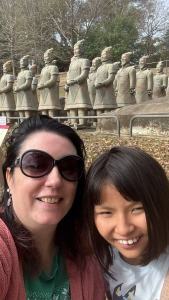 Did you know there are terracotta warriors in Alabama?
Did you know there are terracotta warriors in Alabama?Many of you have followed our journey not just as readers, but as supporters of our family—especially our long adoption process. We began the process to adopt our second child from China in 2019. We were only two months away from being matched when the pandemic brought everything to a halt. In late 2024, China officially ended international adoptions. Just like that, after five years of waiting and watching a little girl grow up in photos, it was over.
It’s a heartbreak I can’t quite put into words yet. One day, I’ll be ready to write more about that part of our story. For now, I will simply say: our hopes of growing our family through adoption are not over—but our next child will not come from China.
So where does that leave us?
Here. Home again, in a sense. Rebuilding. Writing. Living. And now—blogging. This new chapter—our life after China—has been filled with challenges, but also with moments of unexpected grace. And I’m ready to begin sharing again.
 The Southernmost Point
The Southernmost PointOver the next few months, I’ll be sharing more regular updates. I’ve got some new releases coming (more on that very soon!), behind-the-scenes peeks into my Qing Dynasty Mysteries, reflections on life in China, and stories from this messy, beautiful in-between season we’re living now.
Thank you for being here—for caring about the stories I tell, on and off the page.
The post Coming Home: Life After China, One Step at a Time first appeared on Amanda Roberts Writes.
June 11, 2025
The Forgotten Neighbors: Chinese Americans in the Deep South
As someone who has studied Chinese immigration and written about the untold corners of history, I wasn’t surprised to see a Chinese family in Ryan Coogler’s stunning new film Sinners. I was thrilled.
Set in 1930s Mississippi, the film is a hypnotic blend of Southern Gothic, supernatural horror, and cultural reckoning. But one of the most grounded—and poignant—elements is the presence of Grace and Bo Chow, Chinese American grocers quietly navigating the brutality of Jim Crow alongside their Black neighbors.
Most viewers will think, “Wait—Chinese Americans in the Deep South?” And they’ll be stunned to learn: yes. And their story is as American as it is Southern.
This post is my small way of honoring those real families whose history is too often forgotten—and celebrating the filmmakers who brought that truth to light.
From Canton to Cotton Country: Why They Came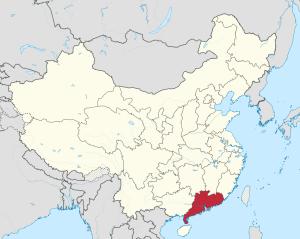 By TUBS – CC BY-SA 3.0, https://commons.wikimedia.org/w/index...
By TUBS – CC BY-SA 3.0, https://commons.wikimedia.org/w/index...In the aftermath of the Civil War, Southern planters were desperate. The formerly enslaved were free, but the cotton still needed to be picked. Many plantation owners looked west—and brought Chinese laborers from California, Cuba, and even directly from China.
These immigrants, largely from the Sze Yap region of Guangdong province, arrived to work the fields. But they quickly realized that farming held little future. Grocery stores, however, did.
By the 1920s, Chinese-owned grocery stores had taken root across Mississippi, Arkansas, and Louisiana—often in Black neighborhoods that white-owned shops neglected or exploited. They became fixtures in the local economy and culture.
Between the Color Lines: The Role of the Chinese GrocerLife in the Deep South was defined by racial segregation. Chinese Americans were classified as “colored” but didn’t quite fit within that system. They couldn’t attend white schools, join white churches, or marry outside their race. But they weren’t fully part of Black communities either.
They lived and worked in that ambiguous space—between privilege and exclusion.
Many Chinese grocers served Black customers with more fairness and dignity than their white counterparts, and in return, they earned loyalty, trust, and a degree of protection. Their stores became sites of quiet resistance, survival, and unlikely solidarity.
Real Families Behind the Fiction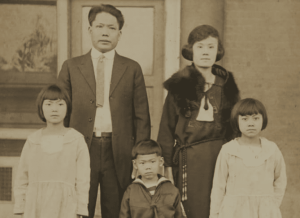 The Lum Family
The Lum FamilyThe Chows in Sinners may be fictional, but they reflect real people:
The Lum Family fought a Supreme Court battle in Lum v. Rice (1927) after their daughter was denied entry to a white school in Rosedale, MS. The Court ruled against them, reinforcing school segregation for all non-white children.
The Chiu Family, featured in the documentary Far East Deep South, discovered deep roots in the Delta after believing their family history began in California.
The Gong Family and others like them ran grocery stores for generations, maintaining customs, languages, and traditions in a region few associate with Chinese culture.
These stories aren’t anomalies. They’re part of a larger, richer tapestry.
Neither Black Nor White: Living in the Margins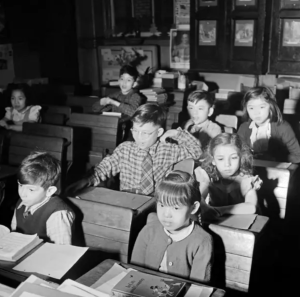 Eric Schwab / AFP via Getty Images
Eric Schwab / AFP via Getty ImagesChinese Americans in the South were too Chinese to be white, too successful to be fully accepted in Black communities, and too few to claim political power. They navigated segregation on a razor’s edge—excluded, tolerated, and occasionally embraced.
Some families passed for white; others doubled down on their identity. Many sent their children north or west for better opportunities. But those who stayed left an imprint—on Black neighborhoods, Southern commerce, and American civil rights history.
Why This History Matters—And Why Sinners Gets It Right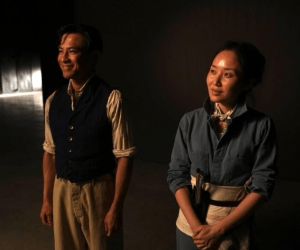 Li Jun Li and Yao in Sinners
Li Jun Li and Yao in SinnersSinners doesn’t just depict Chinese Americans in the South—it honors them. Grace and Bo Chow aren’t caricatures or magical side characters. They’re layered, weary, resourceful, and real. They reflect a truth that historians have known for years, even if pop culture hasn’t caught up.
Coogler’s decision to include them is more than a storytelling twist. It’s a reclamation. A reminder that the South wasn’t just Black and white—it was multiracial, multicultural, and far more complex than textbooks let on.
In a film full of vampires, blood rites, and blues music, the most startling thing might be the truth.
Learn MoreFar East Deep South – A moving documentary on Chinese American roots in Mississippi
The Mississippi Chinese: Between Black and White by James W. Loewen – A foundational work on this community
NPR: The Legacy of Mississippi Delta Chinese
Oyez: Lum v. Rice Case Summary
Final ThoughtsThe vampires in Sinners may be fiction—but the Chows are not.
Their stories, and those of real families like them, should never be reduced to footnotes or curiosities. They are part of the American South’s DNA, as enduring and essential as the blues. They remind us that history is more complicated than we were taught—and that representation, when done right, can resurrect stories long buried.
Next time you think about the Deep South, picture the porch lights glowing at dusk. Picture the juke joints humming with music. And somewhere, not far away, picture a little grocery store run by a Chinese family—quietly surviving, quietly belonging.
The post The Forgotten Neighbors: Chinese Americans in the Deep South first appeared on Amanda Roberts Writes.
May 7, 2025
The Language of Threads by Gail Tsukiyama
The Language of Threads by Gail Tsukiyama continues the quiet, powerful journey of Pei, first introduced in Women of the Silk. Now an adult, Pei leaves war-torn China and arrives in Hong Kong, where she must rebuild her life from the fragments of the past — carrying with her the memories, friendships, and strength forged during her years in the silk house.
As Pei and Ji Shen, her young companion, arrive in the bustling, uncertain landscape of 1930s Hong Kong, they face the challenges of displacement, poverty, and political upheaval. Yet even in the face of adversity, Pei finds resilience in community — forming new relationships with fellow immigrants, factory workers, and quiet allies who help her navigate her new world.
Tsukiyama’s prose remains elegant and understated, suffused with emotional depth and cultural detail. She captures the tension of exile — the ache of what is lost, and the fragile hope of what might still be possible. The novel is not fast-paced, but deeply human, unfolding in gentle, poignant moments that reveal the endurance and complexity of women’s inner lives.
What makes The Language of Threads so moving is its devotion to emotional truth. Pei’s grief, her protectiveness over Ji Shen, her tentative steps toward independence and belonging — all are rendered with care and compassion. As she stitches together a new life, we see how the metaphor of thread extends beyond silk: it becomes a symbol of connection, survival, and the quiet power of female solidarity.
This is a story of starting over, of navigating both personal and political transitions with grace and tenacity. The Language of Threads is a tender, deeply satisfying continuation — a beautiful tribute to the lives women build when the world refuses to make space for them.
About The Language of Threads by Gail TsukiyamaReaders of Women of the Silk never forgot the moving, powerful story of Pei, brought to work in the silk house as a girl, grown into a quiet but determined young woman whose life is subject to cruel twists of fate, including the loss of her closest friend, Lin.
Now, in bestselling novelist Gail Tsukiyama’s The Language of Threads, we finally learn what happened to Pei, as she leaves the silk house for Hong Kong in the 1930s, arriving with a young orphan, Ji Shen, in her care.
Her first job, in the home of a wealthy family, ends in disgrace, but soon Pei and Ji Shen find a new life in the home of Mrs. Finch, a British ex-patriate who welcomes them as the daughters she never had. Their idyllic life is interrupted, however, by war, and the Japanese occupation. Pei is once again forced to make her own way, struggling to survive and to keep her extended family alive as well. In this story of hardship and survival, Tsukiyama paints a portrait of women fighting the forces of war and time to make a life for themselves.
The post The Language of Threads by Gail Tsukiyama first appeared on Amanda Roberts Writes.
Women of the Silk by Gail Tsukiyama
Women of the Silk by Gail Tsukiyama offers a beautifully rendered portrait of a hidden world — the community of women who worked in China’s silk factories during the early 20th century. With lyrical prose and quiet emotional power, Tsukiyama explores the lives of women bound not by family or marriage, but by sisterhood, resilience, and shared labor.
The novel centers on Pei, a young girl sent away from her rural home to work in a silk factory in Yung Kee. What could have been a story of abandonment becomes one of self-discovery, as Pei finds strength and belonging among the women she lives and works with. Over time, she comes to view the silk house not as a place of exile, but as a chosen family — a sanctuary where women forge their own identities and create lives outside the confines of traditional expectations.
Tsukiyama’s writing is quietly powerful, filled with sensory detail that brings both the silk-making process and the women’s inner lives to vivid life. She captures the tenderness, the heartbreak, and the rare joys of a world often overlooked — one shaped by long hours, whispered confidences, and fiercely protected bonds.
While the novel is intimate in scope, it touches on broader themes: the economic and social forces that shape women’s lives, the price of independence, and the small, defiant choices that make up a life of dignity. There is sorrow here, but also great strength — and a quiet kind of revolution in how these women care for one another.
Women of the Silk is a deeply human story — a tribute to friendship, endurance, and the quiet power of women who, despite limitations, find ways to weave meaning, purpose, and love into the fabric of their lives.
About Women of the Silk by Gail TsukiyamaIn Women of the Silk Gail Tsukiyama takes her readers back to rural China in 1926, where a group of women forge a sisterhood amidst the reeling machines that reverberate and clamor in a vast silk factory from dawn to dusk.
Leading the first strike the village has ever seen, the young women use the strength of their ambition, dreams, and friendship to achieve the freedom they could never have hoped for on their own. Tsukiyama’s graceful prose weaves the details of “the silk work” and Chinese village life into a story of courage and strength.
The post Women of the Silk by Gail Tsukiyama first appeared on Amanda Roberts Writes.
May 6, 2025
The Samurai’s Garden by Gail Tsukiyama
The Samurai’s Garden by Gail Tsukiyama is a quiet, meditative novel that explores healing, identity, and the enduring strength of the human spirit. Set against the backdrop of World War II-era Japan and China, the story unfolds not through battle or politics, but through the introspective journey of a young man and the people who gently change his life.
When twenty-year-old Stephen leaves war-torn Hong Kong to recover from tuberculosis in his family’s seaside home in Tarumi, Japan, he finds himself surrounded by silence, solitude, and the careful attention of Matsu, the house’s caretaker. What begins as isolation slowly becomes something transformative, as Stephen begins to uncover the hidden depths of those around him — particularly Matsu and his lifelong friend Sachi, a woman living in exile due to leprosy.
Tsukiyama’s prose is spare and graceful, infused with a deep sense of stillness and reverence for nature. The garden Matsu tends becomes a living symbol of peace and perseverance, echoing the novel’s themes of quiet resistance and inner strength. Through Stephen’s eyes, we witness how beauty, ritual, and kindness can endure even amidst suffering.
Rather than focusing on external drama, The Samurai’s Garden dwells in emotional subtlety. The characters carry deep wounds — from illness, war, and social stigma — yet Tsukiyama offers no easy answers. Instead, she shows how connection, acceptance, and the passage of time can offer their own kind of healing.
This is a novel that unfolds like a watercolor — soft, patient, and full of quiet revelations. The Samurai’s Garden is a deeply moving story of love, loss, and resilience that leaves a lasting impression long after the final page. It is a gentle reminder that sometimes, the most profound transformations happen in the stillness between storms.
About The Samurai’s Garden by Gail TsukiyamaThe daughter of a Chinese mother and a Japanese father, Gail Tsukiyama’s The Samurai’s Garden uses the Japanese invasion of China during the late 1930s as a somber backdrop for this extraordinary story.
A 20-year-old Chinese painter named Stephen is sent to his family’s summer home in a Japanese coastal village to recover from a bout with tuberculosis. Here he is cared for by Matsu, a reticent housekeeper and a master gardener. Over the course of a remarkable year, Stephen learns Matsu’s secret and gains not only physical strength, but also profound spiritual insight.
Matsu is a samurai of the soul, a man devoted to doing good and finding beauty in a cruel and arbitrary world, and Stephen is a noble student, learning to appreciate Matsu’s generous and nurturing way of life and to love Matsu’s soulmate, gentle Sachi, a woman afflicted with leprosy.
The post The Samurai’s Garden by Gail Tsukiyama first appeared on Amanda Roberts Writes.
The Brightest Star by Gail Tsukiyama
In The Brightest Star, Gail Tsukiyama shines a long-overdue spotlight on the life of Anna May Wong — the first Chinese American film star in Hollywood — in a novel that is both a lyrical character study and a poignant exploration of identity, ambition, and resilience.
Born in Los Angeles’s Chinatown in the early 1900s, Anna May Wong grew up straddling two worlds: the traditions of her Chinese immigrant family and the allure of the silver screen. From the moment she steps onto a movie set as a teenager, Anna is determined to rise — even as she faces repeated rejections, racist typecasting, and the painful realization that Hollywood was not made for someone like her.
Tsukiyama’s prose is elegant and restrained, capturing the emotional landscape of Anna’s life with quiet grace. Through richly rendered scenes — from silent film sets to international voyages, lonely hotel rooms to red-carpet premieres — we witness Anna’s triumphs and heartbreaks, her fierce independence and her quiet longing for acceptance. The novel beautifully balances historical fact with imagined interiority, allowing readers to truly inhabit Anna’s experience.
What makes The Brightest Star shine brightest is its emotional resonance. Tsukiyama does not portray Anna as flawless or tragic, but as fully human — defiant, witty, vulnerable, and enduring. Her story is not only about breaking barriers in Hollywood, but about the cost of visibility, the ache of never quite belonging, and the unrelenting pursuit of one’s voice in a world that prefers silence.
Both timely and timeless, The Brightest Star is a tender, powerful tribute to a woman who carved a path where none existed. Gail Tsukiyama has crafted a moving, meticulously researched novel that honors Anna May Wong’s legacy — and ensures her light continues to shine.
About The Brightest Star by Gail TsukiyamaAt the dawn of a new century, America is falling in love with silent movies, including young Wong Liu Tsong. The daughter of Chinese immigrants who own a laundry, Wong Liu and her older sister Lew Ying (Lulu) are taunted and bullied for their Chinese heritage. But while Lulu diligently obeys her parents and learns to speak Chinese, Wong Liu sneaks away to the local nickelodeons, buying a ticket with her lunch money and tips saved from laundry deliveries. By eleven Wong Liu is determined to become an actress and has already chosen a stage name: Anna May Wong. At sixteen, Anna May leaves high school to pursue her Hollywood dreams, defying her disapproving father and her Chinese traditional upbringing—a choice that will hold emotional and physical consequences.
After a series of nothing parts, nineteen-year-old Anna May gets her big break—and her first taste of Hollywood fame—starring opposite Douglas Fairbanks in The Thief of Bagdad. Yet her beauty and talent isn’t enough to overcome the racism that relegates her to supporting roles as a helpless, exotic butterfly or a vicious, murderous dragon lady while Caucasian actresses in yellowface” are given starring roles portraying Asian women. Though she suffers professionally and personally, Anna May fights to win lead roles, accept risqué parts, financially support her family, and keep her illicit love affairs hidden—even as she finds freedom and glittering stardom abroad, and receives glowing reviews across the globe.
Powerful, poignant, and imbued with Gail Tsukiyama’s warmth and empathy, The Brightest Star reimagines the life of the first Asian American screen star whose legacy endures—a remarkable and inspiring woman who broke barriers and became a shining light in Hollywood history.
The post The Brightest Star by Gail Tsukiyama first appeared on Amanda Roberts Writes.
What You Are Looking For Is in the Library by Michiko Aoyama
What You Are Looking For Is in the Library by Michiko Aoyama is a quiet, heartwarming celebration of books, human connection, and the small, serendipitous moments that can change a life. Told through a series of interconnected stories, this novel gently reminds us that sometimes the answers we seek — about purpose, happiness, or direction — are waiting patiently between the pages of a book.
At the center of the novel is Sayuri Komachi, a seemingly ordinary Tokyo librarian with an extraordinary gift: she recommends not just the books her patrons think they want, but the ones they truly need. Each chapter follows a different visitor to the library — a disillusioned office worker, a young mother questioning her path, a recent retiree unsure of what comes next — and shows how Komachi’s book choices plant the seeds for quiet transformation.
Aoyama’s writing (beautifully translated by Alison Watts) is gentle yet profound. Her characters are ordinary people facing familiar struggles, yet their emotional journeys are tenderly rendered and deeply relatable. The stories are less about grand revelations and more about gradual awakenings — the kind sparked by reflection, courage, and just the right story at the right time.
The novel is a love letter to the quiet power of libraries, the importance of listening, and the belief that everyone has a next chapter waiting to be written. Though the tone is subtle, its message is enduring: there is magic in kindness, and great wisdom in stories — especially when shared.
What You Are Looking For Is in the Library is a literary hug — comforting, wise, and quietly life-affirming. It’s the perfect book for anyone feeling a little lost and in need of gentle guidance.
About What You Are Looking For Is in the Library by Michiko AoyamaWhat are you looking for? So asks Tokyo’s most enigmatic librarian. For Sayuri Komachi is able to sense exactly what each visitor to her library is searching for and provide just the book recommendation to help them find it.
A restless retail assistant looks to gain new skills, a mother tries to overcome demotion at work after maternity leave, a conscientious accountant yearns to open an antique store, a recently retired salaryman searches for newfound purpose.
In Komachi’s unique book recommendations they will find just what they need to achieve their dreams. What You Are Looking For Is in the Library is about the magic of libraries and the discovery of connection. This inspirational tale shows how, by listening to our hearts, seizing opportunity and reaching out, we too can fulfill our lifelong dreams. Which book will you recommend?
The post What You Are Looking For Is in the Library by Michiko Aoyama first appeared on Amanda Roberts Writes.




